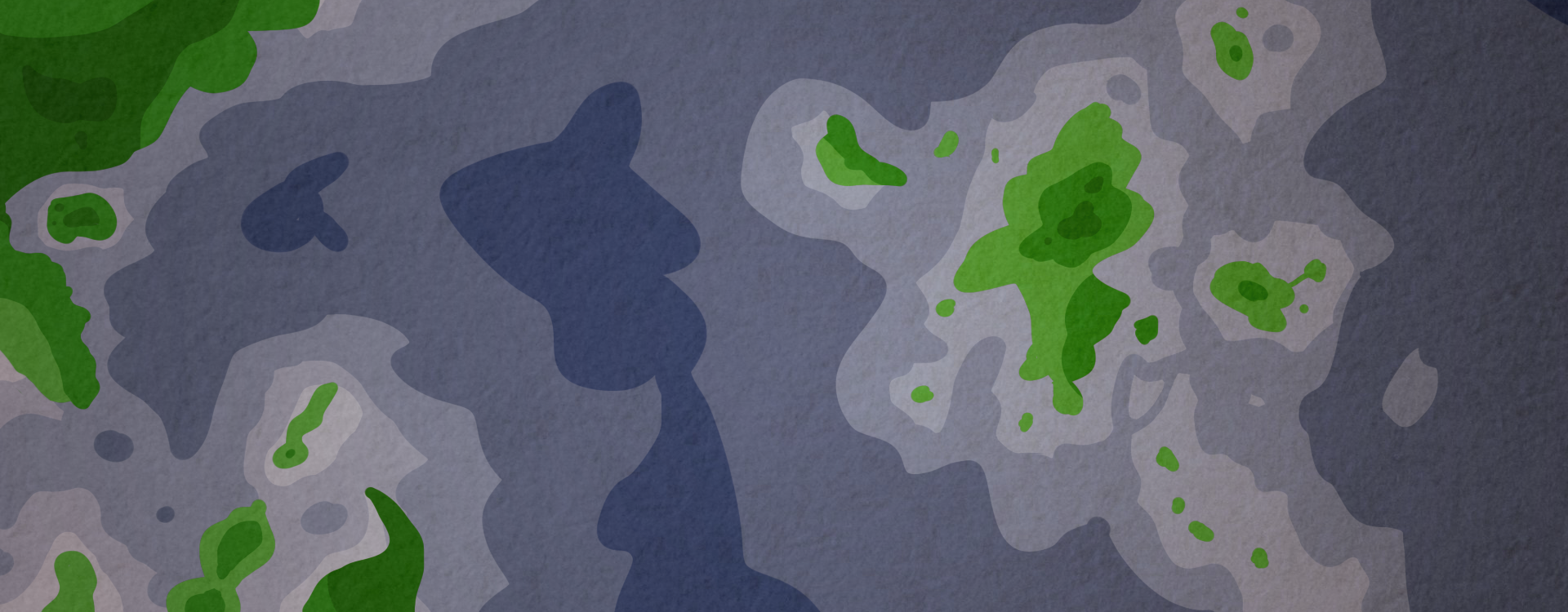City Islands
The initial destruction of those lands was something only the divines could prevent. But all that happened after? That was a tragedy we caused through our neglect. And by we, I mean the Vosti.The City Islands, more formally known as Sámtii Malpe, are a collection of islands off the eastern coast of Abravost. Comprised of territory formerly belonging to the old elven kingdom of Nousetl Meyámii, they were brought to Tiyu Amara in The Collision and nearly completely destroyed.
History
Nousetl Meyámii was a kingdom predominantly inhabited by the Kailkoseltii, located in the elven realm of Tiyu Noha. As it was mostly landlocked, it focused less of the squabbles of the coasts and more on building towards the stars, constructing towering cities which cast deep shadows across the plains. The kingdom's capital contained the largest of these towers, with many possessing coloured windows which cast rainbows across the street during the day. Despite the splendour, Nousetl Meyámii did not survive the world-shattering Collision, which tore it unceremoniously from Tiyu Noha and thrust it into the deep oceans of Tiyu Amara. While large parts of the capital and outlying regions remained above the water, the shaking destroyed many of the towers and sent many inhabitants plunging into the depths. Lacking their ruler, who had either not come through or had drowned, the region descended into chaos. Disease and starvation ran rampant, and those who remained struggled to rebuild or cultivate crops on what land was suited to it and was not buried under rubble. The situation for the survivors changed in 89 AC, when sailors from The Vosti Empire spotted the destroyed cities far off the coast of their colony. The first outsiders to set foot on the islands were Kailkoseltii, who had been forced to steal imperial ships to make the voyage. In the years after, the scattered islands were brought under imperial control, and in 107 AC under the control of the new Republic of Waal Zaimyatl. Suggestions were made by the new parliament to begin a comprehensive reconstruction of the destroyed cities, but these were all vetoed by members of the Kailkoseltii community as well as those survivors from the islands. Instead, the so-called "City Islands" were incorporated into Waal Zaimyatl's sole 'territory', and are mostly a kind of national park or holy site. Some small construction has taken place on the islands regardless, mostly in the form of safe accomodation for those who wish to visit and pay their respects to what was lost.Tourism and Management
Visitors to the City Islands come in many flavours, most succinctly summarised as historians and mourners. The former group travel to the islands throughout the year to examine the remains of the colossal glass towers and to chart the post-Collision history of the fallen kingdom. The latter group, which is almost entirely Kailkoseltii, tend to travel on and around the anniversary of the islands being 'rediscovered' and make pilgrimage to honour their deceased ancestors and relatives. The islands are heavily monitored throughout the year to ensure their 'integrity', and travel to some of the smaller and more destroyed regions is only possible with a permit and the companionship of a guide appointed by the Territorial Government. This government maintains the islands, and manages the needs of the community versus the needs of conservation. One situation in which this arises is the common practice of taking chunks of stone or shards of glass from the island as keepsakes, which the Government now handles to ensure individual buildings are not picked clean.
Alternative Name(s)
Kóhal Táshomte, Sámtii Malpe, Nousetl Meyámii
Type
Archipelago
Owning Organization
Vosti Neglect
Though the date for the islands' discovery is dated to 89 AC, it is widely known that the Vosti Empire was aware of their existence for years prior, possibly as early as 73 AC. Despite this knowledge, the Empire made no attempt to contact the islands and their inhabitants until the Kailkoseltii forced their hand. From the testimonies of survivors, that lost decade was a devastating one. Many died as a bout of plague and ill health swept the islands, and yet more died when an earthquake collapsed one of the largest remaining towers and levelled a section of the capital. The Kailkoseltii firmly believe that if the Empire had made contact in the 70s, most of those people would not have died. Their blood was on the hands of all three emperors who had known about the island. This discontent was one of the catalysts for the eastern colonies seizing independence and founding the Republic of Waal Zaimyatl, and is why the islands remain a graveyard.
Graveyard by Scott Rodgerson





Comments